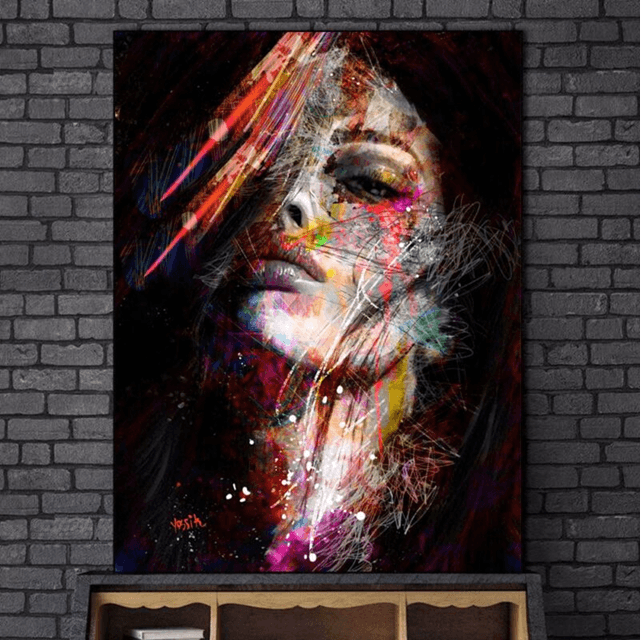Oil paintings have captivated art lovers for centuries, offering a unique blend of texture, depth, and emotion that few other mediums can replicate. From the Renaissance masters to contemporary artists, oil paintings continue to hold a special place in the world of art. In this blog post, we’ll explore the history, techniques, and enduring appeal of oil paintings, and why they remain a beloved form of artistic expression.
A Brief History of Oil Paintings
Oil painting as an art form dates back to at least the 7th century, but it was during the Renaissance in Europe that it truly flourished. Artists like Leonardo da Vinci, Rembrandt, and Johannes Vermeer mastered the medium, using it to create stunningly realistic and emotionally resonant works. The slow drying time of oil paints allowed artists to blend colors seamlessly, create intricate details, and build up layers of texture, giving their works a lifelike quality.
Over the centuries, oil painting evolved with the times. The Impressionists, such as Claude Monet and Vincent van Gogh, used bold brushstrokes and vibrant colors to capture light and movement, while modern and contemporary artists have pushed the boundaries of the medium even further, experimenting with abstract forms and unconventional techniques.
Why Oil Paintings Are So Special
- Richness and Depth: Oil paints are known for their rich, luminous colors. The medium’s ability to layer and blend creates a depth that draws viewers in, making the artwork feel almost three-dimensional.
- Versatility: Oil paints can be applied in thick, textured strokes or thin, delicate glazes. This versatility allows artists to create a wide range of effects, from hyper-realistic portraits to abstract landscapes.
- Durability: When properly cared for, oil paintings can last for centuries. Many of the world’s most famous artworks, such as the Mona Lisa and Starry Night, are oil paintings that have stood the test of time.
- Emotional Impact: There’s something inherently emotional about oil paintings. The texture, the play of light, and the artist’s hand visible in every brushstroke create a connection between the viewer and the artwork.

The Process of Creating an Oil Painting
Creating an oil painting is a labor of love that requires patience, skill, and creativity. Here’s a simplified look at the process:
- Preparation: Artists typically start by preparing their canvas, often applying a primer like gesso to create a smooth, durable surface.
- Sketching: Many artists begin with a rough sketch or underpainting to map out the composition.
- Layering: Oil paints are applied in layers, starting with the background and working toward the foreground. Each layer must dry before the next is applied, which can take days or even weeks.
- Detailing: Once the base layers are complete, the artist adds details, refining the shapes, colors, and textures.
- Varnishing: To protect the finished painting and enhance its colors, a layer of varnish is often applied.
The Enduring Appeal of Oil Paintings
In today’s digital age, where art can be created and shared with the click of a button, oil paintings remind us of the beauty of slow, deliberate creation. They invite us to pause, to appreciate the skill and passion that went into each brushstroke, and to connect with the emotions and stories behind the artwork.
Whether you’re an art collector, a casual admirer, or an aspiring artist, oil paintings offer something for everyone. They are a testament to the power of human creativity and the timeless appeal of art that speaks to the soul.
How to Start Your Own Oil Painting Journey
If you’ve ever been inspired to try your hand at oil painting, there’s no better time to start. Here are a few tips for beginners:
- Invest in Quality Materials: While it’s tempting to start with cheaper supplies, investing in good-quality paints, brushes, and canvas can make a big difference in your results.
- Learn the Basics: Take a class or watch online tutorials to learn fundamental techniques like color mixing, blending, and layering.
- Be Patient: Oil painting is a slow process, but that’s part of its charm. Embrace the journey and enjoy the creative process.
- Experiment: Don’t be afraid to try new techniques and styles. Oil painting is a versatile medium, and there’s no “right” way to create art.

Conclusion
Oil paintings are more than just art—they are windows into the human experience, capturing moments of beauty, emotion, and imagination. Whether you’re admiring a masterpiece in a museum or creating your own work at home, oil paintings have a way of touching the heart and inspiring the mind. So the next time you encounter an oil painting, take a moment to appreciate the skill, history, and passion behind it. After all, art is not just something we see—it’s something we feel.
What’s your favorite oil painting? Share your thoughts in the comments below, and let’s celebrate the timeless beauty of this incredible art form together!

